Industry News, trenchless products
Armadrillco High-Flow/Side-Load Housing Adapted to the RockEye
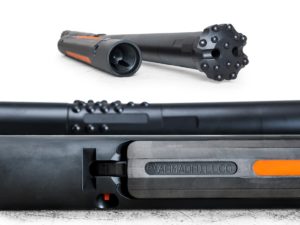 (Hutchinson, Kansas) – The spring 2017 acquisition of Armadrillco® solidified StraightLine HDD’s position as a leader in hard condition tooling. The announcement today of the adaption of the patented Armadrillco transmitter housing to the RockEye® Hammer System is a significant step in diffusing Armadrillco technology throughout StraightLine HDD tooling platforms.
(Hutchinson, Kansas) – The spring 2017 acquisition of Armadrillco® solidified StraightLine HDD’s position as a leader in hard condition tooling. The announcement today of the adaption of the patented Armadrillco transmitter housing to the RockEye® Hammer System is a significant step in diffusing Armadrillco technology throughout StraightLine HDD tooling platforms.
Adapting Armadrillco side-load housing technology gives users easy access to electronics, larger capacity fluid/air passages and improved durability. The housing’s patented Arma-Loc® system is a field-proven design that gives users quick access to electronics by virtue of removing a single pin. Free from threads, the Arma-Loc system virtually eliminates problems associated with damaged or over-torqued bolts, as well as vibration-induced lid failure.
The industry’s most secure lid retention system is also the most protected. Working in tandem with the Arma-Loc lid security system, a patented urethane and O-ring system is designed to seal and protect the sonde cavity from fluid/debris infiltration. The system also forms a cushioned platform that shields valuable electronics from punishing vibration and heat produced by a hammer working in harsh rock environments.
Large internal passages, up to 1-inch in diameter, represent a significant improvement in air/fluid flow. The larger passages are capable of delivering air volume up to 1,200 CFM and fluid volume of 300+ GPM.
Visit www.straightlinehdd.com and www.sourcehdd.com for more information.
Industry News, trenchless people
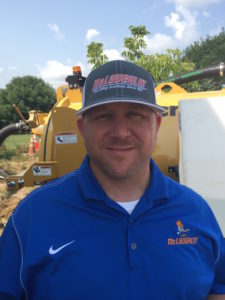 Company hires Cory Lee as regional sales manager
Company hires Cory Lee as regional sales manager
GREENVILLE, S.C. — August 8, 2017 — McLaughlin is proud to welcome its newest employee, Cory Lee, who is joining the team as a regional sales manager serving all McLaughlin customers in the Southwest region.
Lee brings over 15 years of sales knowledge and 5 years of management experience to his new role, including a management position at Vermeer. Lee used innovative sales tactics to pursue new leads while maintaining strong relationships with existing customers as a territory sales manager and solutions specialist at Vermeer.
“With his prior field experience at Vermeer, his familiarity with the underground construction industry and his proven sales record, Cory is a fantastic addition to the McLaughlin team,” said Jeff Wage, vice president of McLaughlin. “His willingness to go above and beyond for customers combined with his exceptional sales and management expertise will allow him to bring the highest level of support to the Vermeer dealers in his region.”
McLaughlin is a leading manufacturer of trenchless construction equipment including auger boring machines, Vermeer-branded vacuum excavators and pneumatic piercing tools, as well as locators, directional drills and various attachments. Lee’s role will be to support the full line of McLaughlin products to dealers and customers.
For more information on McLaughlin products and services, visit the company’s website at www.mclaughlinunderground.com or email McLaughlin at mmole@mightymole.com.
Industry News, trenchless projects
Irrigation and Hydroelectric Project to Ease Food Crisis in Mid-Western Region of Nepal
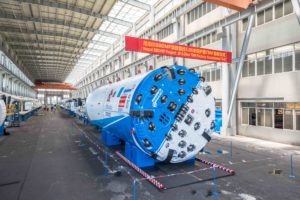 Nepal will welcome its first TBM ever this summer, a 5.06 m (16.6 ft) diameter Double Shield machine for the Bheri Babai Diversion Multipurpose Project (BBDMP). The Robbins TBM underwent its Factory Acceptance Testing in July 2017 and is currently being shipped to the jobsite in the Siwalik Range, part of the Southern Himalayan Mountains. Pre-construction, including laying gravel onto rural roads and excavating wells for drinking water, has been completed to make way for the TBM and its impending launch.
Nepal will welcome its first TBM ever this summer, a 5.06 m (16.6 ft) diameter Double Shield machine for the Bheri Babai Diversion Multipurpose Project (BBDMP). The Robbins TBM underwent its Factory Acceptance Testing in July 2017 and is currently being shipped to the jobsite in the Siwalik Range, part of the Southern Himalayan Mountains. Pre-construction, including laying gravel onto rural roads and excavating wells for drinking water, has been completed to make way for the TBM and its impending launch.
The BBDMP is one of Nepal’s 11 National Pride Projects–prioritized plans sanctioned by the Government of Nepal to further develop the mainly rural country. This project will irrigate 60,000 hectares (almost 15,000 acres) of land in the southern region of Nepal, benefitting an estimated 30,000 households. It will divert 40 cubic meters of water (1,400 cubic feet) per second from Bheri River to Babai River under a head of 150 m (492 ft) using a 15 m (49 ft) tall dam, providing year-round irrigation in the surrounding Banke and Bardia districts. The water will also be used for hydroelectricity, with a generating capacity of 48 MW benefiting the country with NPR 2 billion (20 million USD) annually.
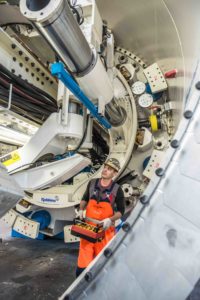 Contractor China Overseas Engineering Group Co. Ltd. Nepal Branch (COVEC Nepal Branch), represented by China Railway No.2 Engineering Co., Ltd Chengtong Branch, is responsible for the headrace tunnel and is aware of the challenges associated with tunneling in tough geology. “The design of Robbins TBMs is good, and in particular Double Shield TBMs,” said Project Manager of BBDMP, Hu Tianran, for China Railway No.2 Engineering Co., Ltd Chengtong Branch. The Siwalik range is projected to consist of mainly sandstone, mudstone and conglomerate, requiring a TBM that can withstand squeezing ground, rock instability, possibly high ingress of water and fault zones. Maximum cover above the tunnel is 820 m (0.5 mi).
Contractor China Overseas Engineering Group Co. Ltd. Nepal Branch (COVEC Nepal Branch), represented by China Railway No.2 Engineering Co., Ltd Chengtong Branch, is responsible for the headrace tunnel and is aware of the challenges associated with tunneling in tough geology. “The design of Robbins TBMs is good, and in particular Double Shield TBMs,” said Project Manager of BBDMP, Hu Tianran, for China Railway No.2 Engineering Co., Ltd Chengtong Branch. The Siwalik range is projected to consist of mainly sandstone, mudstone and conglomerate, requiring a TBM that can withstand squeezing ground, rock instability, possibly high ingress of water and fault zones. Maximum cover above the tunnel is 820 m (0.5 mi).
Due to the challenges in the young geology of the Himalayas, Difficult Ground Solutions (DGS) have been incorporated into the machine’s design. A stepped shield has been designed to move through squeezing ground. Robbins Project Engineer Missy Isaman talked about the DGS features incorporated into the TBM: “There is a probe drill in the rear that probes through the gripper shield in 14 places. We added ports in the forward shield for drilling too. There are eight ports around the circumference for hand drilling. There are also six ports in the top 100 degrees of the shield for forepoling.” She further noted that no equipment was ordered for either of the forward shield drilling options, but it’s easier to add the ports to the shield now, in case more comprehensive drilling is needed later in the bore. Other machine modifications included 35 mm (70 mm on the diameter) of possible overcut for gage cutters, and additional ports in the forward shield for dewatering.
Muck removal will be achieved by muck cars. Robbins will provide Field Service to support the machine erection, testing, commissioning and boring of the first 500 m (1,640 ft). The tunnel will be lined with hexagonal precast concrete segments.
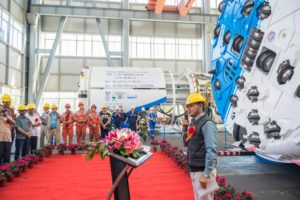 The project owner, the Government of Nepal’s Ministry of Irrigation (MOI), has chosen a TBM over the traditional method of Drill &Blast due to the faster mobilization and rate of advance offered by mechanized mining. “The reason a TBM was chosen for this project was because using D&B method could have taken at least 12 years for project completion. This was due to there only being one excavation heading with no possibility of launching multiple operations using adit tunnels,” said Robbins General Manager for Nepal, Prajwal Man Shrestha. More generally, Mr. Shrestha saw the project as a way to prove that TBMs can indeed take on complex Himalayan rock. “Since the Himalayan range has a young geology and not much has been surveyed yet, the use of newer technology is looked upon with slight apprehension. The first few TBM projects and additional surveys will show how suitable TBM technology will be for the Himalayan Range.”
The project owner, the Government of Nepal’s Ministry of Irrigation (MOI), has chosen a TBM over the traditional method of Drill &Blast due to the faster mobilization and rate of advance offered by mechanized mining. “The reason a TBM was chosen for this project was because using D&B method could have taken at least 12 years for project completion. This was due to there only being one excavation heading with no possibility of launching multiple operations using adit tunnels,” said Robbins General Manager for Nepal, Prajwal Man Shrestha. More generally, Mr. Shrestha saw the project as a way to prove that TBMs can indeed take on complex Himalayan rock. “Since the Himalayan range has a young geology and not much has been surveyed yet, the use of newer technology is looked upon with slight apprehension. The first few TBM projects and additional surveys will show how suitable TBM technology will be for the Himalayan Range.”
The success of the BBDMP, a national pride project, is paramount for the country as well as the TBM industry. It is expected to help aide the food crisis in the mid-western region of Nepal by increasing agricultural yields and invigorating socio-economic development in the region. The Robbins TBM for the 12.2 km (7.5 mi) tunnel is scheduled to launch in November 2017.
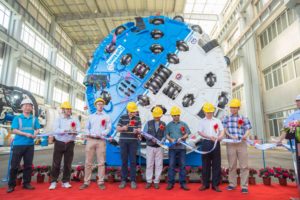 Image 1: The 5.06 m (16.6 ft) diameter Double Shield TBM will bore a 12.2 km tunnel from the Bheri River to Babai River.
Image 1: The 5.06 m (16.6 ft) diameter Double Shield TBM will bore a 12.2 km tunnel from the Bheri River to Babai River.
Image 2: Due to the geological challenges in the Himalayas, DGS features have been added to the machine including a stepped shield, and dozens of ports throughout the front, rear and around the circumference of the machine.
Image 3:. Mr. Saroj Chandra Pandit, Deputy Director General of DOI (Department of Irrigation) speaking at the Factory Acceptance Testing. Other speakers included Mr. Lin Qiang, Deputy Manager of China Railway No. 2 Engineering Co., Ltd and Mike Kolenich from Robbins.
Image 4: The Robbins crew, contractor COVEC Nepal Branch, and project officials stand proudly in front of the Robbins Double Shield TBM that will tackle the challenging geology in the Himalayas.
Industry News, trenchless people
 CALGARY, July 15, 2017 –CCI Inc., one of Canada’s Gold Standard Best Managed Companies http://ccisolutions.ca/ announces the acquisition of Houston based Horizontal Technology, Inc.
CALGARY, July 15, 2017 –CCI Inc., one of Canada’s Gold Standard Best Managed Companies http://ccisolutions.ca/ announces the acquisition of Houston based Horizontal Technology, Inc.
CCI Inc. is a leading expert in Horizontal Directional Drilling (HDD), Open-Cut and Micro-Tunneling methods. Since 2004, CCI has established itself as a driving force in the continued advancement of trenchless pipeline systems and employ proven methods for tackling difficult crossings.
With over 100 years of combined service in the HDD industry, Horizontal Technology, Inc. leads the way as the HDD industry’s premier guidance service and down-hole tooling provider.
For more information, please contact David Dupuis, COO, CCI. Inc. at ddupuis@ccisolutions.ca or 403-932-0560.
Industry News, trenchless products
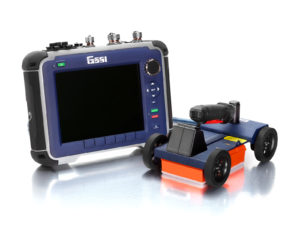 GSSI, the world’s leading manufacturer of ground penetrating radar (GPR) equipment, announces a new engineering initiative focusing on using GPR to solve difficult problems that cannot be solved with any other technologies. Led by newly appointed Vice President of Research and Development David Cist, GSSI’s expert engineering team is focusing on new products for agriculture, manufacturing, robotic inspection, industrial quality assurance/quality control, power systems preventative maintenance, and unmanned autonomous vehicle applications. GSSI’s custom solutions create completely new products, different models of existing products, or a combination of the two.
GSSI, the world’s leading manufacturer of ground penetrating radar (GPR) equipment, announces a new engineering initiative focusing on using GPR to solve difficult problems that cannot be solved with any other technologies. Led by newly appointed Vice President of Research and Development David Cist, GSSI’s expert engineering team is focusing on new products for agriculture, manufacturing, robotic inspection, industrial quality assurance/quality control, power systems preventative maintenance, and unmanned autonomous vehicle applications. GSSI’s custom solutions create completely new products, different models of existing products, or a combination of the two.
“GSSI has a long established history of developing products based on custom needs, and has commercialized several that meet broader market needs,” said Cist. “The custom solutions engineering team brainstorms with customers who are looking for novel ways of handling problems. Often enough, GPR can offer a real solution to difficult problems that can’t be solved any other way. One recent outcome is the creation of a new GPR product line with a sensor that can be integrated into a variety of robots, drones, and other equipment.”
GSSI’s PaveScan® RDM asphalt density assessment tool, which provides accurate real-time measurements to ensure pavement life and quality, was originally developed based on work commissioned by the Texas Transportation Institute (TTI) as part of the Federal Highway Administration’s Strategic Highway Research Program (SHRP2). The commercial version is now being used by state departments of transportation in Minnesota, Alaska, Maine, and Florida, as well as globally in transportation research projects conducted by universities.
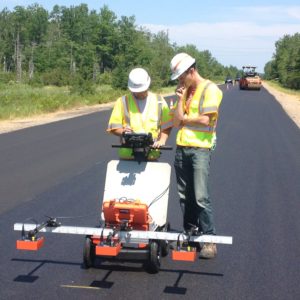 Other custom products commercialized by GSSI include the LifeLocator® TRx survivor detection system, which was originally developed in response to post-911 Homeland Security market needs. GSSI also developed one of the sensors used by the RABIT™ bridge deck assessment tool to determine bridge quality and bridge deterioration. RABIT™, developed by the Rutgers Center for Advanced Infrastructure and Transportation, is an autonomous robot that gathers quantitative data using several nondestructive evaluation technologies. The StructureScan Mini system was developed based on a specific request from one of GSSI’s largest customers in Japan, which years later was seeking a new software solution that would allow them to use the system to analyze insulated concrete forms.
Other custom products commercialized by GSSI include the LifeLocator® TRx survivor detection system, which was originally developed in response to post-911 Homeland Security market needs. GSSI also developed one of the sensors used by the RABIT™ bridge deck assessment tool to determine bridge quality and bridge deterioration. RABIT™, developed by the Rutgers Center for Advanced Infrastructure and Transportation, is an autonomous robot that gathers quantitative data using several nondestructive evaluation technologies. The StructureScan Mini system was developed based on a specific request from one of GSSI’s largest customers in Japan, which years later was seeking a new software solution that would allow them to use the system to analyze insulated concrete forms.
The GSSI custom solution applications engineering team has developed GPR systems for golf course irrigation inspection, tree root inspection, horizontal drilling, detecting the porosity of bricks, and border patrol tunnel inspection systems. Applications under development include use of GPR to establish precise soil elevation and inspection of large and expensive equipment tires used in mining.
For more information on custom solutions and products based on GSSI’s GPR technology, contact sales@geophysical.com.
About GSSI
Geophysical Survey Systems, Inc. is the world leader in the development, manufacture, and sale of ground penetrating radar (GPR) equipment, primarily for the concrete inspection, utility mapping and locating, road and bridge deck evaluation, geophysics, and archaeology markets. Our equipment is used all over the world to explore the subsurface of the earth and to inspect infrastructure systems non-destructively. GSSI created the first commercial GPR system nearly 50 years ago and continues to provide the widest range and highest quality GPR equipment available today.
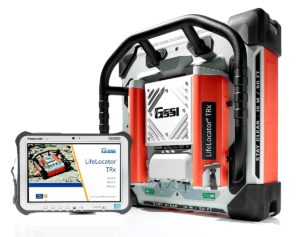
 (Hutchinson, Kansas) – The spring 2017 acquisition of Armadrillco® solidified StraightLine HDD’s position as a leader in hard condition tooling. The announcement today of the adaption of the patented Armadrillco transmitter housing to the RockEye® Hammer System is a significant step in diffusing Armadrillco technology throughout StraightLine HDD tooling platforms.
(Hutchinson, Kansas) – The spring 2017 acquisition of Armadrillco® solidified StraightLine HDD’s position as a leader in hard condition tooling. The announcement today of the adaption of the patented Armadrillco transmitter housing to the RockEye® Hammer System is a significant step in diffusing Armadrillco technology throughout StraightLine HDD tooling platforms.








